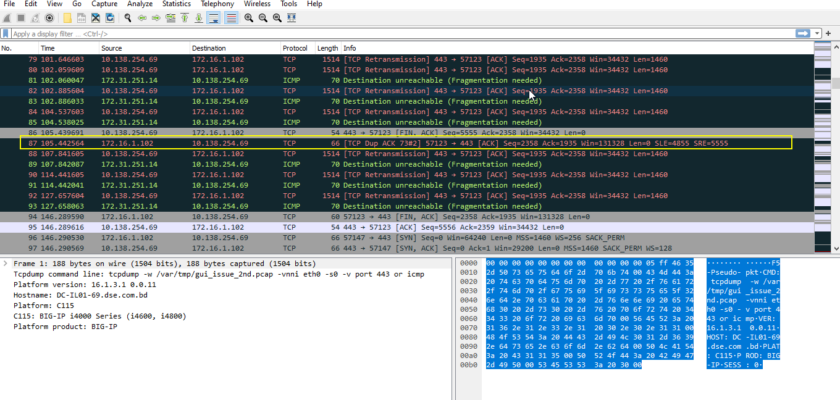Duplicate TCP ACKs can occur on a network for several reasons. Here are some common causes:
Packet Loss:
When a TCP sender transmits data to a receiver, it expects to receive an acknowledgment (ACK) from the receiver indicating that the data has been received successfully. If the ACK packet is lost in transit, the sender will retransmit the data, and the receiver will send another ACK when it eventually receives the data. This results in duplicate ACKs.
Out-of-order Packets:
Sometimes, packets can arrive at the receiver out of order due to varying network paths or routing issues. When this happens, the receiver may generate duplicate ACKs to indicate that it has received some data, but there are missing packets.
Delayed ACKs:
Some TCP implementations use delayed ACKs to improve efficiency by waiting for a certain period or a specific amount of data before sending an ACK. In such cases, if multiple ACKs are queued up to be sent, it can lead to duplicate ACKs when they are finally sent.
Packet Retransmissions:
In congested or high-latency networks, TCP segments may get lost or delayed, leading to the sender retransmitting data. Upon receiving the retransmitted data, the receiver may generate duplicate ACKs if it has already sent an acknowledgment for the initial data.
Network Jitter:
Jitter refers to variations in packet arrival times caused by fluctuations in network latency. If jitter is significant, it may cause the receiver to generate duplicate ACKs.
Misconfigured Network Devices:
Incorrectly configured routers, switches, or firewalls in the network path can interfere with TCP traffic, leading to duplicate ACKs.
Malfunctioning Network Hardware: Failing network hardware components, such as network interface cards (NICs) or switches, can contribute to duplicate ACKs.
To troubleshoot and resolve duplicate ACK issues, you can consider the following steps:
Check for Network Congestion:
High levels of congestion in the network can lead to packet loss and retransmissions. Monitor network traffic and identify congested areas.
Analyze Packet Captures:
Use tools like Wireshark to capture and analyze network packets. Look for patterns of duplicate ACKs and analyze the packet flow for any anomalies.
Check for MTU Issues:
Make sure the Maximum Transmission Unit (MTU) settings are consistent across the network devices to avoid packet fragmentation and potential ACK issues.
Review Network Hardware:
Inspect network hardware for failures or misconfigurations. Check cables, switches, and routers for proper operation.
Optimize TCP Parameters:
Fine-tune TCP parameters like the initial congestion window size, retransmission timeouts, and congestion control algorithms to improve performance.
Update Firmware and Drivers:
Ensure that all network devices have up-to-date firmware and drivers to avoid any known issues.
Consider QoS Implementation:
Implement Quality of Service (QoS) policies to prioritize TCP traffic and minimize congestion.
Contact ISP or Network Administrator:
If you’ve exhausted your local troubleshooting efforts, contact your Internet Service Provider (ISP) or network administrator for further assistance.
Remember that the resolution of duplicate ACK issues may require a combination of diagnostic steps and might involve collaboration with network experts if the problem persists.
